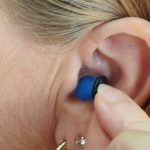25 interesting facts about the hearing
 Thanks to hearing, we receive a huge amount of information about the world around us. Perhaps only vision helps us more than he does, although you should not discount other feelings. That is why you need to be careful about your hearing, because it can be damaged quite simply, but recovery is not always possible. This process is time-consuming, and by no means always successful.
Thanks to hearing, we receive a huge amount of information about the world around us. Perhaps only vision helps us more than he does, although you should not discount other feelings. That is why you need to be careful about your hearing, because it can be damaged quite simply, but recovery is not always possible. This process is time-consuming, and by no means always successful.
Ears grow our whole life, as does our nose. Moreover, the ears of one person are completely different from each other, both inside and outside.
Until 1876, earwax was used to make matches. Then it was replaced with magnesium-phosphorus glue.
People talk among themselves at a frequency of 200 to 8000 Hz, and the human ear is most sensitive to a frequency of 1000 to 3500 Hz.
Noise weakens the human immune system. Scientists have proven that with a sound volume above 65 dB, the pulse is significantly faster, and above 90 dB – even tachycardia begins. Every third lover of nightclubs and loud music after 4-5 years, hearing is significantly impaired.
Our ears do not stop working even in a dream, continuing to hear sounds. However, our brain ignores them.
Earlobes are the only part of the human body that is not subject to aging.
In children, the hearing is much more sensitive than in adults. Throughout life, we hear worse and worse – this process cannot be stopped.
Hearing aids improve the quality of life of 90% of people with hearing problems.
A person hears his voice differently than the people around him. People around us perceive our voice in a completely different way, because they hear it much “cleaner”.
Every year, more than 300 thousand people in the world are hearing impaired due to the improper use of cotton buds.
Crickets and grasshoppers hear with their paws located in front. They are covered with hairs with a film sensitive to noise and sound.
Unlike a fingerprint, the shape of people’s ears is not unique. In nature, there are exactly 28 ear “patterns”.
Every tenth person has various kinds of hearing problems. But 4 out of 5 people who need a hearing aid are not eager to use it.
The sound of snoring (up to 69 dB) can be almost as loud as the noise of a drill (70-90 dB).
The main cause of hearing problems is the strong impact of noise. Most often, people working in noisy places, for example, in factories where the noise level is constantly high, suffer.
If a person wants to hear something, he pushes his right ear to the sound source, even if he hears equally well by both. It is just a reflex.
The human ear can distinguish more than 1,500 different musical tones.
The sound moves at a speed of 344 meters per second. Sound boom occurs when an object overcomes the speed of sound. Sound waves in front and behind the object collide and create a shock.
Women usually hear better than men. However, men better recognize the distance to the sound source, as well as the direction to it.
Sound exceeding 140 dB causes instantaneous hearing damage every second. 90 dB for a person is already considered dangerous.
The range of frequencies within which people can hear sounds is called the sound or auditory range. Sounds located above this range are ultrasound. And those below are infrasound.
Elephants and whales are mostly used by infrasounds to communicate with relatives, and dogs – by ultrasound.
Absolute hearing does not depend on the condition of the ears, but on the perception of sounds by the brain.
Ears are a self-cleaning organ. Pores in the ear canal secrete earwax, and tiny hairs called cilia eject sulfur from the ear. But an excess of earwax can cause serious health problems.
According to statistics, men are more likely to have hearing problems than women. It’s simple – men often work in conditions that damage their hearing over time.



























